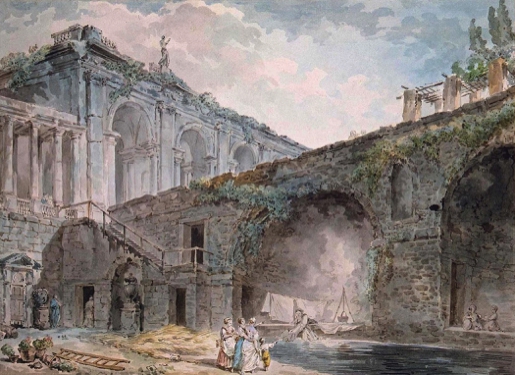By 1748, things in the center site, our sector 8, had not evidenced terribly much change, save more brambles and more serpents, I would suppose (Figure 5).
Page 2

Figure 5: Rome in ruins at Villa Madama
Rowe, therefore, presumed that to advance the supposition of Rome “interrupted” and development for our sector, we required a fake history of Rome to explain the events — an imaginary history to grab onto by way of managing an area of Rome that most certainly provoked Percy Bysshe Shelley to write, “Go Thou to Rome, at once the Paradise, the grave, the city and the wilderness ...”7
One consideration for my 2014 presentation at the symposium, and now this essay, I continued to wonder WHY was there, 36 years after the exhibition, an apparent resurgence of interest, first evidenced in 2010, when it was shown at the Venice Biennale, and then again the year of the symposium, 2014, when it was once re-exhibited here in Rome at MAXXI? So much has been said, some critical, some not, with endless discussions on Rowe’s predisposition for figure to ground, which is hard to avoid since Nolli’s plan is just that, figure and ground. Ada Louise Huxtable, in the New York Times critique of the exhibition, “Rome and Artistic Fantasy” observes, “Roma Interrotta“ is already a celebrated project in the tight circles of today’s international architectural cognoscenti."8 She continues, “with instructions to devise 20th century “interventions” or changes in the plan through insertion of ... new buildings. These additions were to be integrated into the historical ... framework of Nolli’s city. It was literally, “Rome Interrupted” at a point in the past for a radical excursion into the 20th century. Billed as an exercise in urbanism, it was, from the start, an elite and erudite game.”9
(Click title to return to first page)